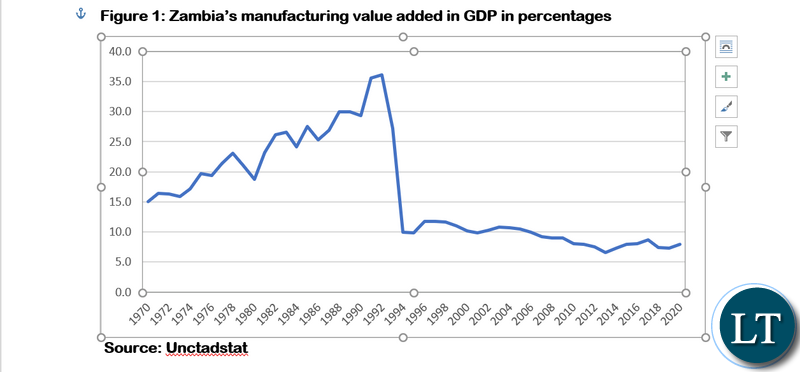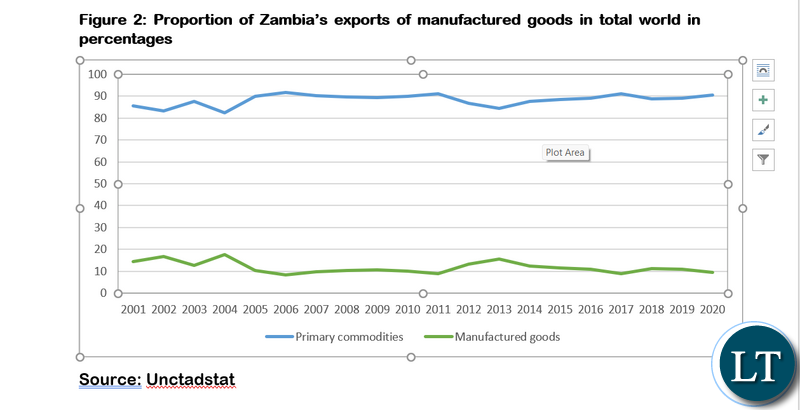
By Edward Chisanga
Dindi opened the gate and shouted, “Uncle, here I’m. I wanted to surprise you. Those who make appointments to visit you are not really nephews or nieces. Real nieces and nephews don’t. For why should they?”
I too shouted, “That’s fine. You come in. But you will pay for breaking the family rule.”
“How uncle?”
“Well, I have a sizzling economic puzzle in my mind. You know that the President launched the Public-Private dialogue forum this week? And the President believes that the private sector is an engine of economic development. Is it?”
“Yes, I know that he did launch. But I doubt that Zambia’s private sector is an engine of economic growth. I mean, what economic indicators are we using? I think what we ought to be saying is that the private sector is supposed to be an engine for economic growth. But in the past and today, its performance cannot be equated to engine of economic growth.”
“So, what economic indicators can we use to understand our private sector’s contribution to economic development or not? What makes you underrate our private sector so much?”
“Public-private sector partnership has been there the last fifty years. We used to hear about meetings between the two all the time. Kaunda had this partnership, in which the private sector listed all their challenges, expectations and needs. We saw manufacturing in the economy although state-owned blossom. As Figure 1 below shows, manufacturing value added in the economy as a proportion reached its highest peak of about 36% in 1992. Yes, the state-owned enterprises flourished much more than the private sector in terms of championing value addition. In most countries in the world, in particular in Asia with which Zambia shares many things such as culture, economic challenges, etc in common, it is the private sector which champions manufacturing. In Zambia, the private sector has, for many years failed to do that. Zambia’s private sector has failed to take Zambia’s manufacturing back to its peak of 36% proportion in the economy. “
“I agree with you nephew. It is inconceivable that Presidents coming after Kaunda never fostered manufacturing. Since the proportion of manufacturing in the economy fell from 36% in 1992 to 10% in 1996 to 11% in 1996, there has been a continuous downturn, reaching 8% in 2020. Surely, during all this period, the public-private sector partnership has been around. This private sector is always blaming government for its failure to compete regionally and internationally. Does it mean that all previous governments never knew how to support private sector?

“It’s clear uncle that Presidents that came after Kaunda fell short of focusing on manufacturing, hence consigning our country to the level of non-competitiveness. Zambia’s share fell from 36% in 1992 down to 8% in 2020. But look at the other African countries in Table 1 below. Their shares are quite magnificent, implying the significant role of manufacturing in the overall economies. These are the countries likely to benefit much more from the Africa Continental Free Trade Area because they export value added products compared to ours which exports primary commodities. These are the African countries that are surging while ours is backtracking. Although their actual exports of manufactured goods is still low and not as significant as those for South Africa, whose share of manufacturing value added in GDP is only 12%, and exports more advanced manufactured goods, they are potential champions of the future.”
Table 1: Top Sub-Sahara African countries’ manufacturing value added in GDP in percentages
|
|
2020 |
|
Eswatini |
31.0 |
|
Equatorial Guinea |
20.7 |
|
DRC |
19.6 |
|
Central African Republic |
19.2 |
|
Mali |
18.2 |
|
Uganda |
17.5 |
|
Morocco |
17.2 |
|
Egypt |
17.1 |
|
Senegal |
17.0 |
|
Lesotho |
16.3 |
|
Cameroon |
15.7 |
|
Tunisia |
15.3 |
|
Togo |
14.6 |
|
Burundi |
13.8 |
|
South Africa |
12.9 |
|
Zambia |
8.0 |
Source: Unctadstat
“Finally, nephew, I see you also have this image of a graph below. What exactly are you showing?”
“I’m trying to translate the manufacturing in the economy into exports, to see the robustness of Zambia’s export value addition drive. Experts like the United Nations (UNCTAD) tell us, ‘A country is dependent on commodities when these account for more than 60% of its total merchandize exports in value terms.’ UNCTAD is not alone. Dani Rodrik and Margaret McMillan, two famous experts on Africa once wrote, ‘The larger the share of natural resources in exports, the smaller the scope of productivity-enhancing structural change. The key here is that minerals and natural resources do not generate much employment, unlike manufacturing industries and related services.’ Now look at the statistics of Figure 2 below showing the share of Zambia’s exports of manufactured goods in total of all product that we export to the world. The bottom line shows the share of manufactured goods while the top line shows that of primary commodities. What do you think?”
“It is clear that Zambia’s share of exports of primary commodities or non-value-added products is a whooping 90%, meaning manufacturing products are minimal. Again, it shows the under-performance of our private sector. Tunisia’s share of exports of manufactured goods in total stands at 81% and Viet Nam’s share is 87%. These are countries whose private sectors are seriously integrating in global value chains while we are not. They don’t lobby for public-private sector forums in order to advance. Perhaps their governments are fully focused on supporting them.”
“Thanks a lot my nephew as usual. Your insights are quite helpful. I agree that our private sector must quickly move from exporting tomatoes, potatoes, maize, eggs, vegetables, etc. Even those that boast of being Kings are only kings in Zambia. Let them extend their kingdom outside Zambia. More importantly to me, where are the indigenous black Zambians in the country’s private sector? What do they produce? What do they do? They spend more time chasing politics and importing posh cars while Indian, Lebanese and Chinese Zambians are selling steel or exporting the few manufactured goods. To me, a private sector that does not export, or sells within Zambia manufactured goods is as good as dead. Perhaps Zambia should open an Embassy in Viet Nam strictly for learning manufacturing. After all, Viet Nam has overtaken Africa in exports of manufactured goods.”



Good discussion there between Uncle and the nephew
Another PF cadre hallucinating in his bedroom after ejaculation cos they can t afford Mutale Mwanza anymore. Grow up! go out & look for a job befor baillifs come even to take that kaloba house away from you. Cos really there is no sese in whatever nonsense are saying, Zambia are not sitting on social sites anymore to read stupid articles by you or emmanuel mwamba after you brought misery to this country-what great advise can a dull person give a top achiever in one classroom? He is already a top through his own hard work & you are already a dunderhead,so stay there at the bottom where you alone.
With the corruption among civil servants (and other government officials) still absolutely rampant, I am not going to get my private company involved with the public sector. I rather stick the profit in my own pocket!
What an insightful article!. Such articles should be presented to the rightful people who drive the economy, be shared in schools, universities, vocational training centres etc use as case study. Information from such articles could be translated into real projects that could benefit Zambian people. How do you eat an elephant?
I read brilliant ideas under comments section. We have visionary people in Zambia. We require implementation phase.
Mr Edward Chisanga, thank you for sharing this insightful article.
Comments are closed.